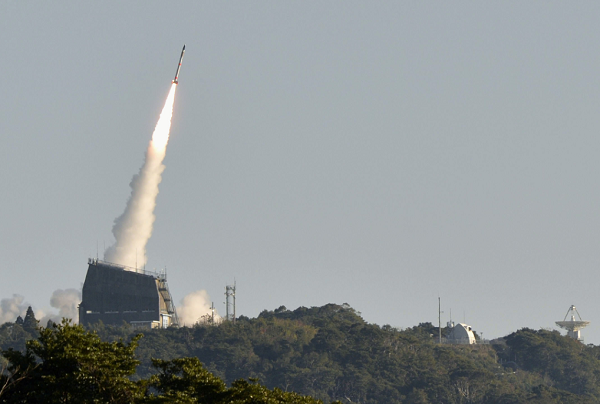War In Space? Watch Live As US Military Satellite Liftoffs From Cape Canaveral To Block Foreign Enemies [VIDEO]

A U.S. military satellite is scheduled to launch Friday night. The liftoff of the satellite, which was designed to detect enemy missiles, is slated to air live online, according to reports.
The third Space Based Infrared System (SBIRIS) satellite will launch from Cape Canaveral Air Force Station in Florida Friday night at 7:42 p.m. EST. The satellite, powered by a United Launch Alliance (ULA) Atlas V rocket, was initially scheduled to take to space Thursday, but the launch was reportedly pushed back following a sensor issue and scheduling conflicts with another aircraft, which caused airspace restrictions.
During the $1.2 billion mission, the missile will track a wide area of the Earth in search of scattered missiles that could belong to enemy forces, which Col. Dennis Bythewood, director of the Air Force’s Remote Sensing Systems Directorate at Los Angeles Air Force Base, said could be spread across a wider area than missile threat locations during the Cold War, USA Today reported.
“In today’s world, and certainly over the last 20 years, the proliferation of missiles outside that concentrated area has grown demonstrably,” Bythwood said. “Regional systems present in Asia and the Middle East are well within the range of our deployed forces, as we’ve seen over the last years of combat operations.”
Over the past five years, ballistic missiles scattered across the world increased by more than 1,200, according to the Missile Defense Agency. Nearly 6,000 missiles are based in areas outside of the U.S., Russia, China and nations within the North Atlantic Treaty Organization.
SBIRIS features a series of sensors in different orbits that are linked to software on the ground and can detect where a missile has launched and where it’s headed. The satellite is expected to cut the amount of time it normally takes to track and fix a missile in half, and it can transmit that information to the military’s missile warning network faster than former methods of missile tracking, Byethwood explained.
ULA will lives stream the satellite launch during a live webcast on YouTube, which starts at 7:22 p.m. The launch will also be broadcast on Space.com or viewers can watch the live stream video below.
© Copyright IBTimes 2025. All rights reserved.






















